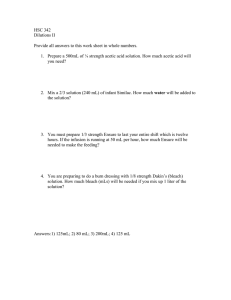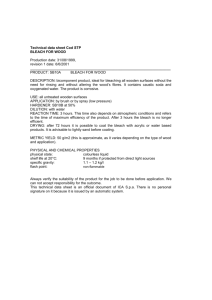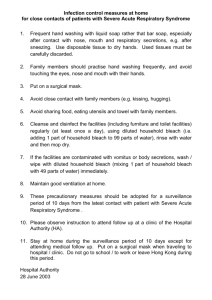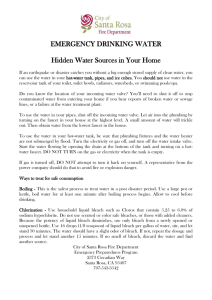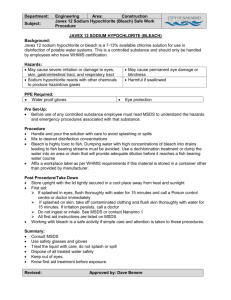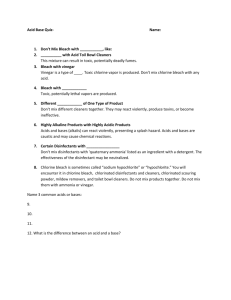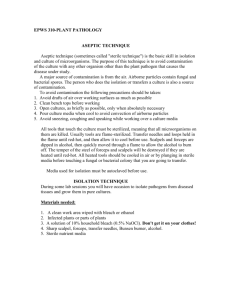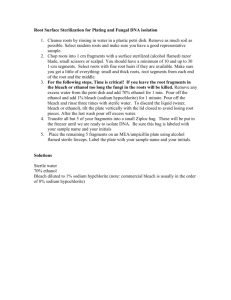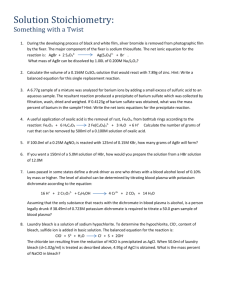Study Guide Biotech 2
advertisement
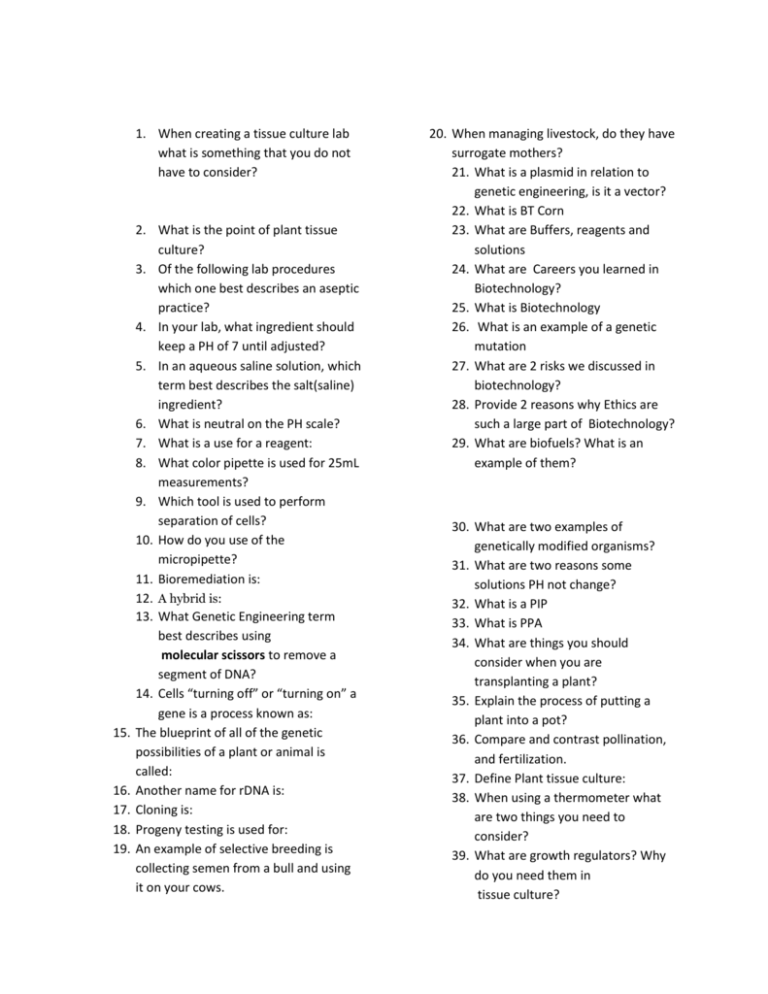
1. When creating a tissue culture lab what is something that you do not have to consider? 15. 16. 17. 18. 19. 2. What is the point of plant tissue culture? 3. Of the following lab procedures which one best describes an aseptic practice? 4. In your lab, what ingredient should keep a PH of 7 until adjusted? 5. In an aqueous saline solution, which term best describes the salt(saline) ingredient? 6. What is neutral on the PH scale? 7. What is a use for a reagent: 8. What color pipette is used for 25mL measurements? 9. Which tool is used to perform separation of cells? 10. How do you use of the micropipette? 11. Bioremediation is: 12. A hybrid is: 13. What Genetic Engineering term best describes using molecular scissors to remove a segment of DNA? 14. Cells “turning off” or “turning on” a gene is a process known as: The blueprint of all of the genetic possibilities of a plant or animal is called: Another name for rDNA is: Cloning is: Progeny testing is used for: An example of selective breeding is collecting semen from a bull and using it on your cows. 20. When managing livestock, do they have surrogate mothers? 21. What is a plasmid in relation to genetic engineering, is it a vector? 22. What is BT Corn 23. What are Buffers, reagents and solutions 24. What are Careers you learned in Biotechnology? 25. What is Biotechnology 26. What is an example of a genetic mutation 27. What are 2 risks we discussed in biotechnology? 28. Provide 2 reasons why Ethics are such a large part of Biotechnology? 29. What are biofuels? What is an example of them? 30. What are two examples of genetically modified organisms? 31. What are two reasons some solutions PH not change? 32. What is a PIP 33. What is PPA 34. What are things you should consider when you are transplanting a plant? 35. Explain the process of putting a plant into a pot? 36. Compare and contrast pollination, and fertilization. 37. Define Plant tissue culture: 38. When using a thermometer what are two things you need to consider? 39. What are growth regulators? Why do you need them in tissue culture? 40. If I have Bleach that needs to be diluted from 12%to 3%, and I need a total of 200mL of it how much Solute do I need, and how much Solvent do I need? 41. If you need to adjust the PH of Water to 5.5, what do I need to add to my water to lower the PH? 42. If I need to adjust the PH of water to 8.5 what can I add to make my PH higher? 43. When you need a total of 200 ml bleach solution to be diluted down to 2% bleach solution from a 8.5% bleach solution how much solute and how much solvent should you have? 44. When you are given 40ml of a 9% bleach solution and you need to dilute it down to a 4% bleach solution how much water should you add? 45. Why is the environment for tissue culture so important? 46. What size should your cauliflower be cut at in the beginning of plant prep? 47. What do Buffers, and PH have in common (complete sentences) 48. What do you add to your media to decrease the PH 49. How long do you stir the plant in soapy water? 50. What are two safety procedures you should consider while doing media prep? 51. Define Aseptic Technique 52. Name a solution, and identify the solute and the solvent. 53. When a substance needs to be more basic, what number range does it need? 54. What can you add to a substance to make it more acidic? 55. If your PH tester is testing H20 at 7.9, and you need a true PH of 5.7; what should your PH tester read when you alter your PH? 56. What type of stem is considered an above ground horizontal stem? 57. Which motion is the least important when doing parliamentary procedure? 58. What is the term used to describe a plant that has its cambium layer removed and wrapped with sphagnum moss and saran wrap to grow roots on it? 59. What is the term used to describe what type of stem a corm i 60. Compare and contrast asexual propagation to sexual propagation?

